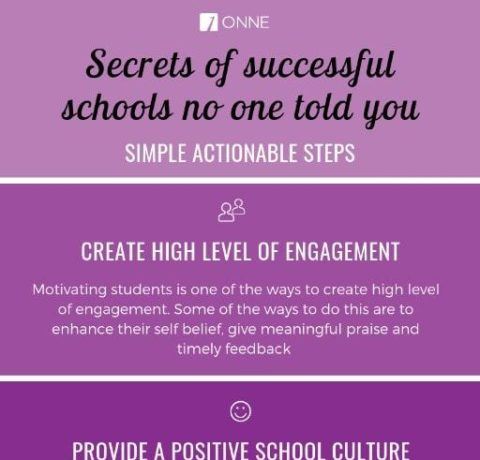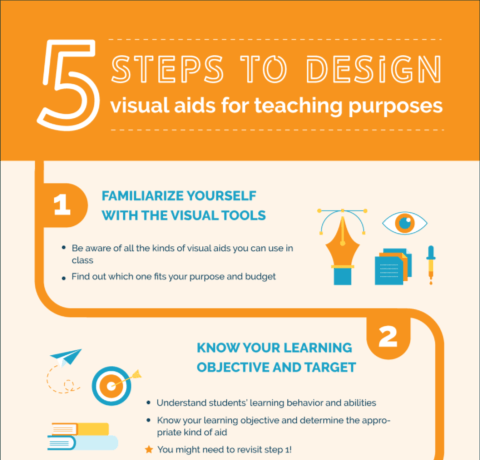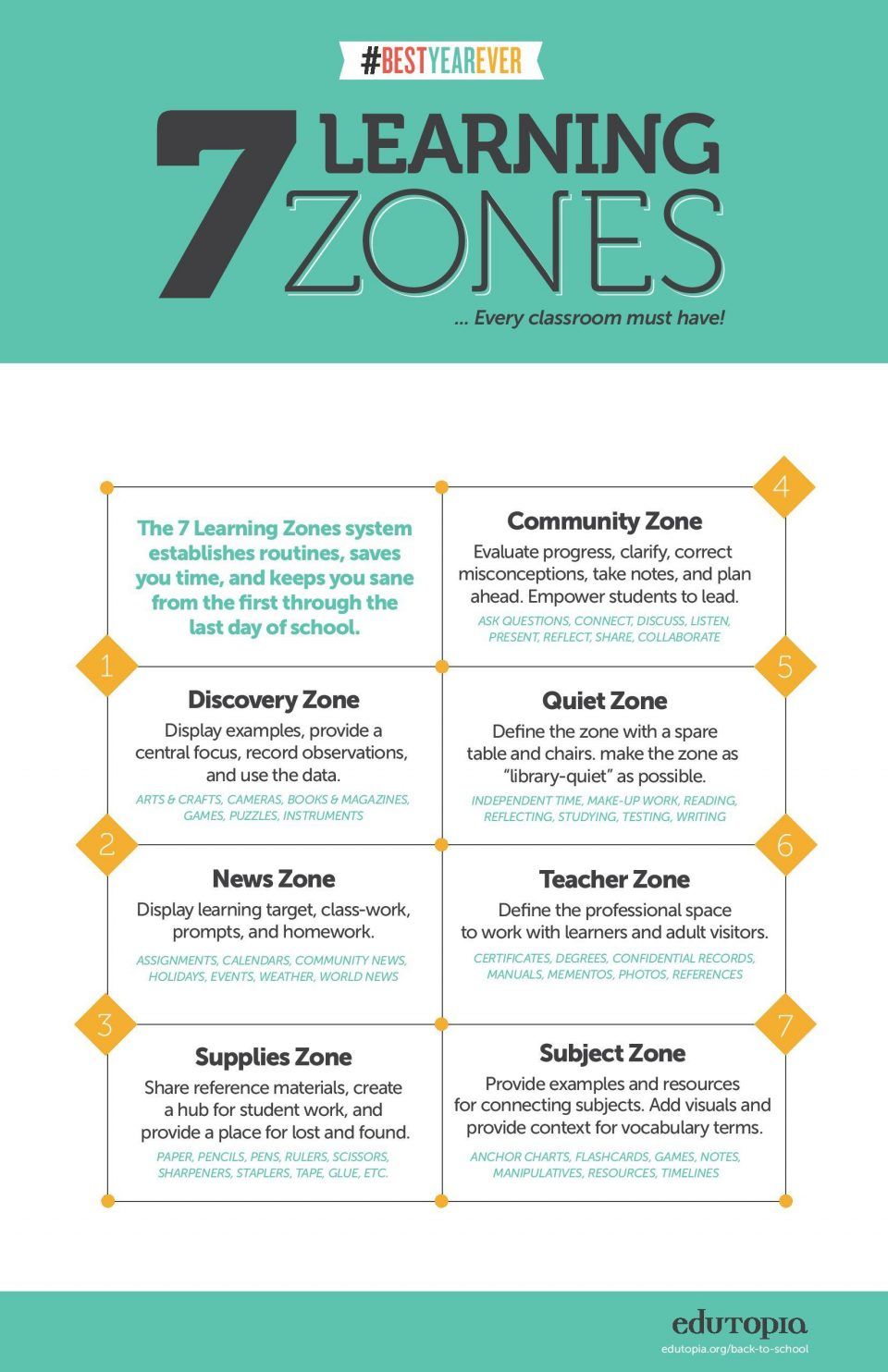The Learning Zones of a Classroom Infographic
The Learning Zones of a Classroom Infographic presents seven learning zones that can help you establish routines, save time, and maintain your sanity from the first through the last days of school.
- Discovery Zone
The discovery zone houses all those items that spark imagination. These include arts and crafts materials, recorders, cameras, music makers, games, puzzles, and fun books and magazines. Display examples, provide a central focus, record observations and use the data to inform your instructional strategies and design your lesson plans. - News Zone
The news zone will help you manage your classroom calendar, assignments and projects, school-wide events, holidays, upcoming celebrations, weather, temperature, community and world news. You can also use this space to list your daily learning target, classwork, writing and discussion prompts, and homework. - Supplies Zone
Here is where you provide pencils, pens, highlighters, sharpeners, staplers, scissors, hole punchers, rulers, paper, glue, tape, paper clips, tissue, paper towels, hand sanitizer, a trash can, and general tools. Use this space for reference materials, create a hub for student work and provide a place for lost and found. - Community Zone
A community zone serves multiple purposes. Students are reminded that we are all working toward common goals. It provides time to discuss what was learned, make connections, pose questions, present other perspectives, and engage in reflection. These discussions are an opportunity for you to evaluate progress, clarify information, address misconceptions, and take notes to plan ahead. - Quiet Zone
Some students naturally prefer to work alone, while others simply need a quiet zone to catch up on work, study, read, write, take a test, or reflect. A spare table and chairs in a corner of your room can be used to define the zone. - Teacher Zone
This zone is your professional space where you plan, prepare, grade, analyze data, and complete your reports. You can use it as a private space to host one-to-one conferences with your students. Be sure to display your credentials like degrees, teaching certification, and key professional development certificates. These credentials and a pair of adult-sized chairs will set the business tone when parents, colleagues, or administrators visit your room. - Subject Area Zone
The subject area zone houses the worksheets, resources, games, and tech tools for the subjects you teach. Provide anchor charts with key ideas and strategies, flashcards, study notes, key people in the field, timelines, and a variety of print materials. Upgrade your word wall by adding visuals and real objects. Organize vocabulary alphabetically or by concept or story -- the key is to provide context for each term.







You can adjust your cookie preferences here.